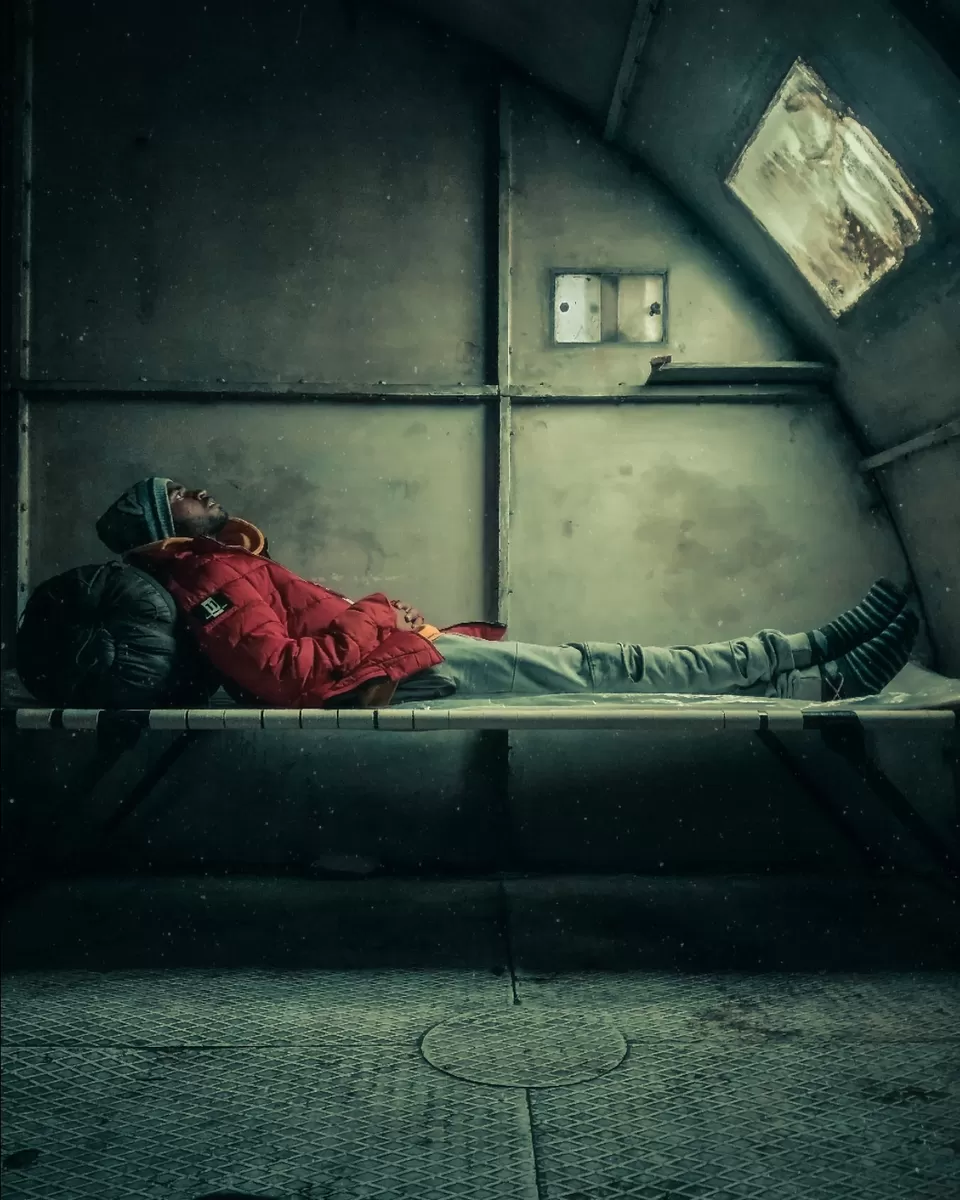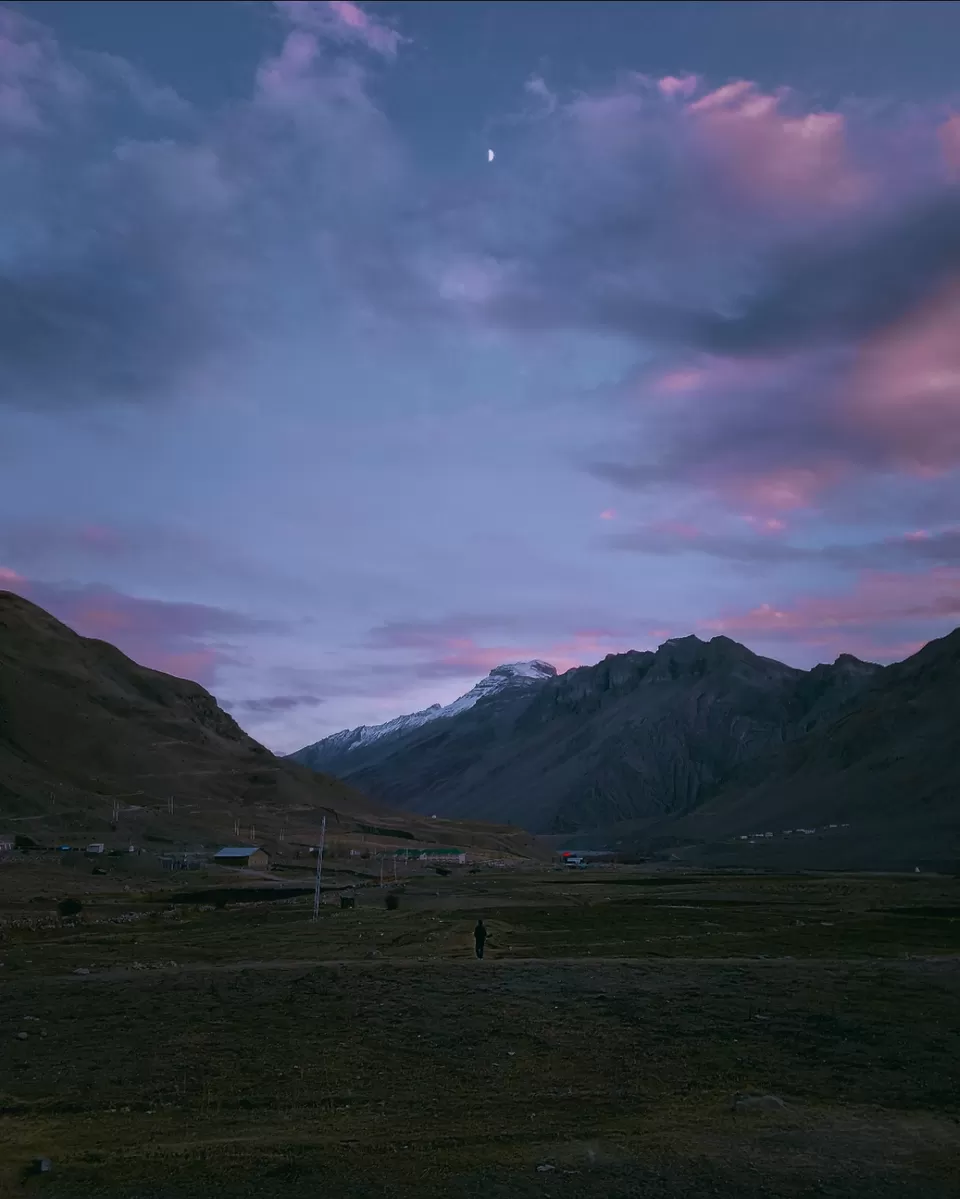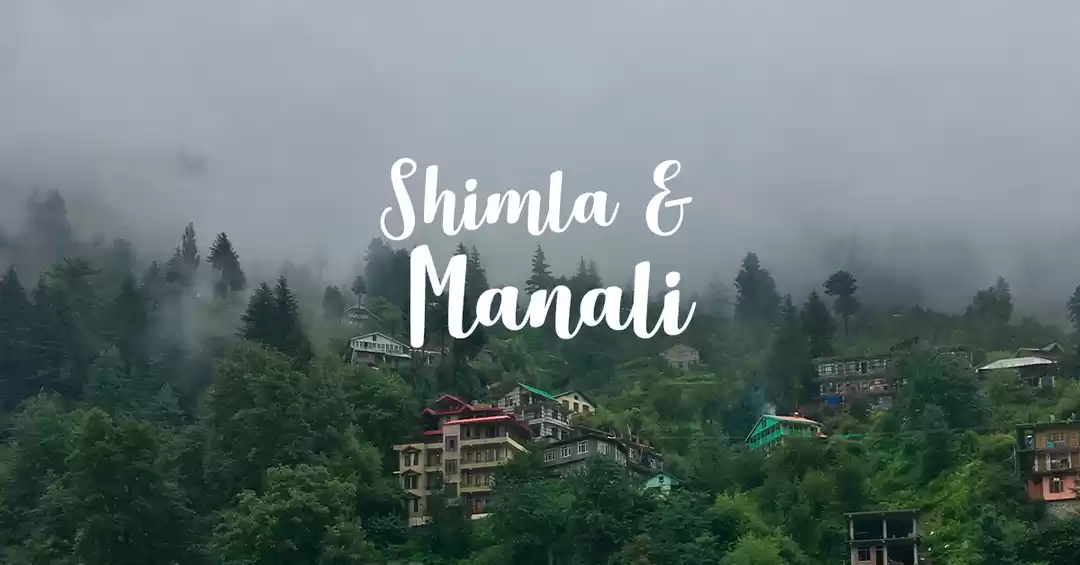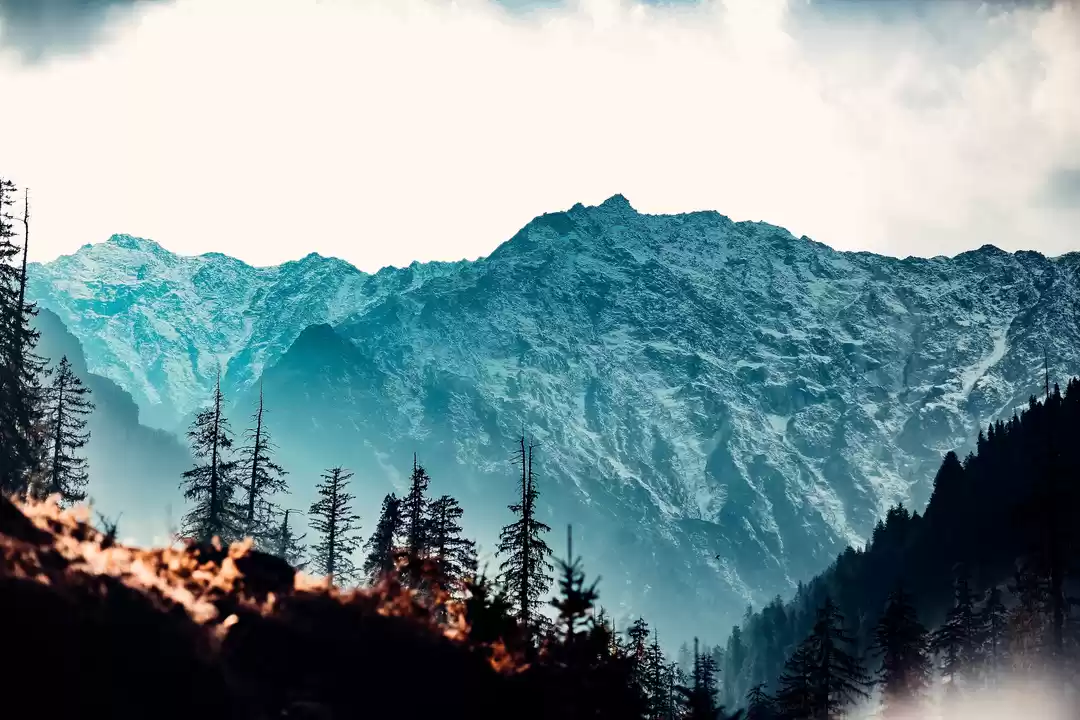“My main aim was to travel by not spending any money on transport. Was I concerned about getting back home safely? Yeah. But all the more, I was determined to make this journey worth my time.”
Sandeep Nagargoje, a 23-year-old travel photographer from Latur, Maharashtra had recently shifted to Kalpa in Himachal Pradesh to manage a homestay. A normal day in his life included practising photography, going on long walks with his dog- Hapsu, playing cricket with his friends in town along with hospitality management at the homestay. But once the tourist season was over, life started getting monotonous. So, one fine day, he packed his bag and set off on a road trip to the Spiti Valley, carrying Rs. 2,000 ($27) in his pocket.
Day 1
10:30am, Kalpa, Himachal Pradesh
“If I saw you hitchhiking, I’d smile and return your thump’s up, just for you doing such a great job of being a positive roadside influence.”
After walking on the road for a good 4 kms and nearly 20 rejections, finally a young fellow- Rohit, let me hop in his car. During the 15minutes drive, Rohit bhaiya talked about his family and his wife who was a singer. The drive was a short one, but it was enough time for us to bond. He even invited me to stay at his place whenever I was back in Kalpa. Once we reached Peo, bhaiya strongly suggested that I take a bus to Spiti and dropped me off at the main bus stop. But I was pretty clear to hitchhike my whole way.
‘So far, so good’- at least that’s what I thought until I hopped on my second ride for the day. This time there was no difficulty in finding a ride, but I wasn’t convinced with the driver so I decided to get down at the Peo Bazaar and find another transport. Perhaps hitchhiking is not so easy after all!
A short while later, I arrived on the national highway where I’d been dropped off by some super-nice people who were on their way to deliver electronic goods to Sangla. Hunger had taken over me, and I forgot to ask them their names. But what I will always remember in my fond memories are the pleasant conversations with them over photography, camera talks and sweet goodbyes.
Hungry, starving, I walked for nearly 6 kms and not one person was willing to give me a lift. ‘What on Earth is happening? I should have never done this’- my thoughts were playing on repeat, until God was kind enough to send a farishta to help me out. A policeman noticed me walking alone and enquired about my plans, and stopped a truck for me. And in this way, I was on my 4th ride for the day- still hungry but relieved to be on the move.
If you’ve ever travelled in a truck, you know how uncomfortable the seats are, making the journey even more tiring. And here I was, travelling on one of the most dangerous roads, with every turn getting scarier than the previous one. But thank God for the rasgullas offered to me, at least I was not starving while being scared for my life!
I got down at Spiloo at 5:30pm and rushed into the first eatery I saw. I ordered for any food that was available, and within minutes, my growling stomach was served to a plate full of delicious rajma chawal- undoubtedly, one of the best meals of my life!
Sun would be setting soon and I had to quickly think about my stay, so I hopped onto a bus (hitchhiking rule break number 1) going to Pooh. A few minutes on the road, and boom! Landslide.
Mountain roads, cold weather, no stay arrangements for the night, I was worried until I met Bodhraj bhaiya in the bus, an engineer from the state of Jammu Kashmir who offered me a stay at his construction site in Pooh. Nothing luxurious, but did I really have an option? After a couple of minutes, while we were still stranded in the bus, us men got out to give a helping hand in getting the vehicle on the road again. Phew, back on track! At the construction site, I had a good meal in the company of other workers and soon drifted into deep sleep.
Day 2
9:30am, Pooh
The first ride for the day never seems to be in my luck. So again, I continued my journey on foot for about 4 kms till a car stopped to give me a ride. The man was kind enough to drop me off till a turn where I saw a few people standing and I guessed this was where I could find my next ride. This time I wasn’t alone. An elderly man also seemed to be waiting for a vehicle.
While leaving from Spiloo, I had managed to carry some fruits for emergency hunger calls. So, I took out a couple of bananas from my backpack and offered it to the elderly man, who for some reason, looked hungry. Turns out, I was right. He thanked me for the bananas and soon we struck a conversation. I spoke to him about my journey so far and he told me to join him in his friend’s car who was transporting apples from the Kinnaur region to Nako. About 30 minutes into the conversation, we saw an old Maruti Alto approaching.
In the mountains, especially in this part of the Himalayas, the roads aren’t the best due to frequent landslides, dangerous terrain and the high altitude. Hence, here you will find a lot of vehicles like jeeps, small cars, trucks as opposed to the type of vehicles one would normally find on the roads in other regions.
On the way to Nako, comes a small village called Leo where uncle lived (the elderly man, I fondly called him uncle). He invited us to his house for a cup of tea but since we were on a schedule, we had to decline. I thanked him for his help, he wished me luck for the rest of my journey and again we were on the move. So many people, so many goodbyes. It wasn’t easy, not one bit. But that’s the thing about travelling, you bid goodbyes and look forward to yet another journey.
At 12:30pm we reached Nako. Sensing that I had no fixed plan in mind, the driver told me that he ran a small homestay nearby and I could use a room for the night. I declined his offer and explained to him that I was not looking forward to spending money on my stay. Something about it fascinated him, and he was happy to let me use the room in exchange for some help in putting the apples into boxes. That I could surely do!
I had plenty of time in hand so, I decided to stroll around the village and do some basic sightseeing. Nako falls on the border of the Kinnaur and the Spiti valley. What makes this town unique as compared to the rest are the houses that are made of mud, the roofs covered with dried grass, cattle grazing in the surroundings, something that is not a usual sight in this region. Nako is famous for its fresh-water lake situated in the middle of the town. The water present here is the result of melted glaciers right up in the high Himalayan mountains, and it is also the primary source to the residents. This lake is frozen during the months of January and February, but on this particular day in November, it was swollen with plenty of water. Right above it is a small hill with a huge Buddhist prayer bell. I hiked up to this hill, and gazed at the beauty this town was!
Day 3
10:30am, Nako
I stuck to this rule during the trip i.e. to never stop walking even when there was no vehicle available. Why waste time? At least I could look around more.
While walking from Nako, I came across a truck parked by the road where an old lady approached me. She was bubbly, chatty and genuinely looked interested in talking to me. She asked me why I was walking all alone with my backpack on a road like this. She thought that I wandering with no money, probably my appearance also spoke the same. She was returning home after selling apples in Reckong Peo. Though I could tell that she didn’t make a huge amount from this business, she took out a 2,000 rupees note and handed it over to me and wished me luck. Such are the people here! Purest hearts, and the most giving souls. Obviously, in no way I could accept it, but since she insisted, I let her give me a few Khumani fruits instead of the money. The lady was already on the move, and she instructed the truck driver to take me along with him. I was speechless, I could barely explain to myself what had just happened.
“You think you have to want
More than you need
Until you have it all you won’t be free
Society, you’re a crazy breed
I hope you’re not lonely without me”
Listening to Eddie Vedder’s song- Society, I kept walking. I’ve played this song over a hundred times, but it never made more sense to me until the moment I met the old lady. I could then understand the meaning behind each and every word sung.
As I started walking, I saw a truck passing and instantly put my hand out to stop it. He was the same driver whom I’d passed minutes ago. Over the next 4 hours, we chatted over a couple of interesting topics like the road conditions, his job, why farming shouldn’t be encouraged in the Spiti valley, what I do for a living and so on. He was a patient man with 8 years of driving experience, he had friends all along the road, and knew each and every turn on these harsh roads. At Chong, another small village on the way, we stopped for lunch and feasted on delicious food. He dropped me off a few meters before the Sumdo check post and I thanked him for the good company and the pleasant drive.
The people in Spiti and Kinnaur region care for others. It is a very simple yet uncommon quality that us humans possess. Whenever I was walking all by myself, every now and then, a bus would stop and the driver would tell me to hop in. So, I started dodging these people and tried not to attract any attention to myself. The reason being- I wanted to hitchhike my whole way. A police car was passing by and I was little hesitant in asking for a lift. Anyway, I took a shot, and put my hand out yet again.
The Assistant Commander serving the Indian Army was posted at the Sumdo check post. He too was from Latur in Maharashtra and had great interest in photography. And this is how, we bonded. Just like everyone else I had met so far, he enquired about my journey and by the end of the short drive, he invited me to be his guest and stay at the military bunker for the night.
Being the assistant commander, he was given the most luxurious house in the Sumdo military quarters. His cook prepared biryani while he spoke about his family and showed me pictures from his various military expeditions at unknown locations. In the evening, along with the other army men, we sat by the sangam (junction of two rivers) and drank plenty of hot chai. The commander also arranged for a short photography workshop where I was told to share some of my knowledge with the others. Camera talks with the Indian Army? Sweet! That was a first for me. The session ran smoothly, and the army men went back to watching the live cricket match on TV. I went to my bunker where I was given a warm bed, a sleeping bag and soon, called it a night.
Day 4
6:00am, Sumdo Check Post
I’m not an early riser, but when the assistant commander asked me to join the team for a run, I couldn’t refuse. So, I was up at 6am and headed to the mountain roads for an early morning warm-up. It was going to be a slow day with not much to do. The car transporting rations to Kaza would arrive late in the afternoon and I had plenty of time in hand, so we played volleyball in the court. As the car came, I hopped on to it. Kaza, here I come!
The road is scenic and passes right next to the Spiti river. If lucky, one can spot the Himalayan Blue Sheep in the valleys, sometimes even on these roads. Though Spiti is a dry dessert-like region, it is home to a number of animals including the Himalayan brown bear, snow leopard, Himalayan Ibex and many more.
Once I reached Kaza at around 6pm, I had a major task to complete before sunset- make the cheapest stay arrangements. Since, I did not know any home stays or hotels, I headed over to a general store to make a few inquiries. The young men at the store were pretty hostile, and we didn’t particularly have a pleasant conversation but eventually, they told me to contact an electrical engineer who ran a homestay nearby.
Sanjeev, a friendly young man, lives with his dog ‘Daisy’, and has rented out the remaining rooms in the building for tourists. I took the room, it was looked clean and cozy. Before heading to bed, Sanjeev bhai and I had plenty of conversations in the tandoor room (used in Himalayan houses to keep the place warm). I spent the rest of the night here.
For most people, while travelling, there comes a point when they start longing for comfort, a good bed and friendly surrounding. I was now standing at a crossroad where I was longing to go back home, yet I was enjoying a different type of journey here.
I had to make a choice.
Day 5
9am, Kaza
As I woke up, I rubbished the idea of packing and leaving for home. I was on a road trip, all alone, and it had turned out well for me so far. I didn’t want to let go of this opportunity. I freshened up and fancied some local dish- Thukpa at a restaurant nearby. Then I headed to a small monastery on top of a peak, just outside Kaza. The view from above was breath-taking and it was then that I was fully satisfied with my decision of staying back and completing the rest of the journey.
When I think about it now, I’d like to consider the elements which influenced me to stay. Maybe it was the wind, the landscape, the mountain weather, Daisy or the people, I’d never know…
I came back to my room, Sanjeev bhai had already left for work. I made hot chai for myself, watched TV and played with Daisy. She was happy, and that made me happy.
In the evening, I went for a walk around the town. Seeing that the river didn’t carry as much water, I descended down to the banks and captured a few pictures of the sunset and the stunning landscape around.
Day 6
12pm, Kaza
The weather was getting colder and it would start snowing any day now. It was time to head back home. The return journey would easily take 2 days, given the condition of the road.
As usual, I was walking and soon I put my hand out to stop a tractor passing by. The driver was a jolly good man who lived in the Lilang village in Spiti. He showed deep interest about the busy city life, the tall buildings, about Mumbai. I showed him a few pictures of the famous Marine Drive in Mumbai and the apartment in which I stayed. Just outside Lilang village, we stopped at a dhaba for lunch. It wasn’t particularly a feast meal, but my stomach was full and the food was delicious!
I got down just outside Lilang, a few puppies lying on the road caught my attention. I began playing with these adorable tiny beings and a few minutes later a car with 2 Buddhist monks stopped by to give me a lift till Tabo. On the way, our vehicle picked and dropped a couple of more people. It was a quiet 2-hour ride. The passengers didn’t converse much, only passing occasional smiles towards me. I plugged in my earphones and continued with the only playlist that I had access to in this non-network heaven. The songs from the ‘Into the Wild’ album had gained more meaning during my time here; and the mountains were to be credited.
Upon reaching Tabo, I was wandering around for a while when I saw a driver and conductor still present inside a stationary bus. I went over and asked them if I could spend the night in the bus along with them. But I had no sleeping bag, and the weather was getting terribly cold. The driver advised me to find a place in town. All the homestays I checked out were simply out of my budget, and the person in charge of the Tabo monastery guesthouse wasn’t in town. Feeling helpless, I came back to the bus stop and as if God has answered my silent prayers, an elderly man approached me. He has seen me a while ago roaming around clueless and offered me help.
Being a Government teacher, he stayed in the school quarters provided to by the Government. I wouldn’t call his place a house, it was home. He prepared hot food, we talked over dinner, he gave me a warm bed to sleep in. In the morning, before heading to school, the breakfast and hot water was left ready for me. He treated me like a son, I had done nothing to deserve such kindness. But I was sure that people radiated kindness, irrespective of who the other person was, in my case, a stranger.
The next morning, I caught the bus back to Kalpa and was in a day’s time, I was home. I had the comfort that I was longing for, but I was already missing the road heading to a land far far away…
Sandeep is an IT engineer and a travel photographer currently living in Latur with his family. The Coronovirus pandemic has put a halt to his plans of returning back to his homestay in Kalpa. He terribly misses Hapsu and is waiting to be soon reunited with him and the mountains.












































